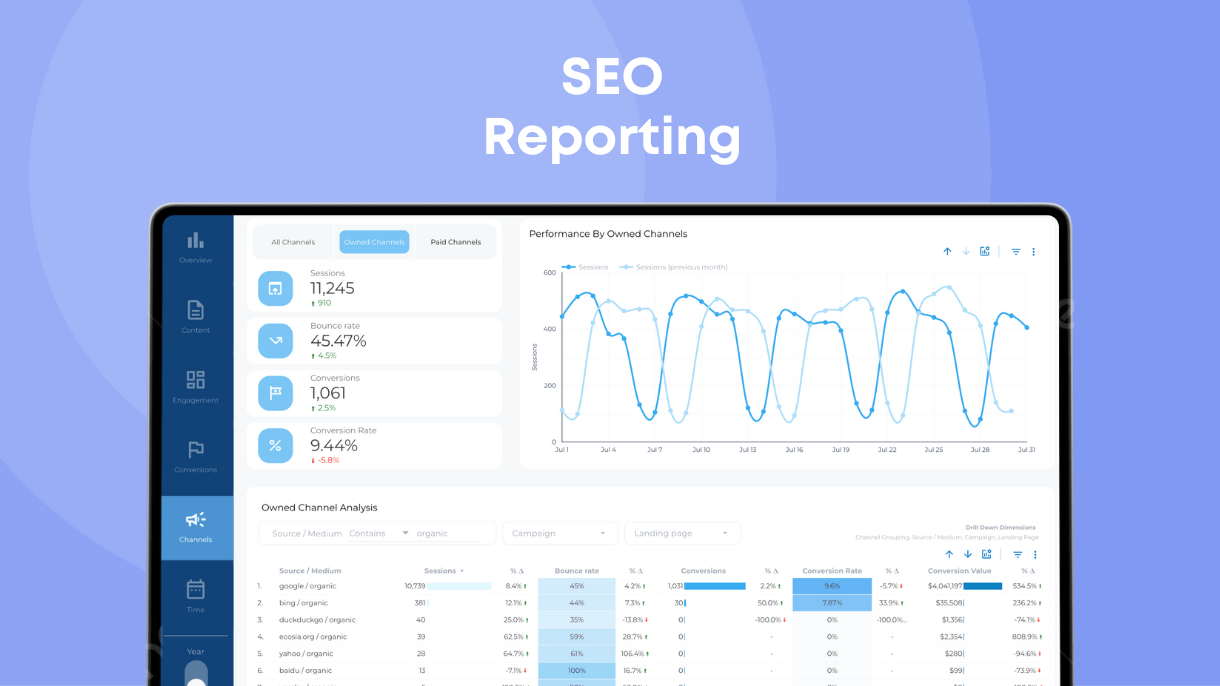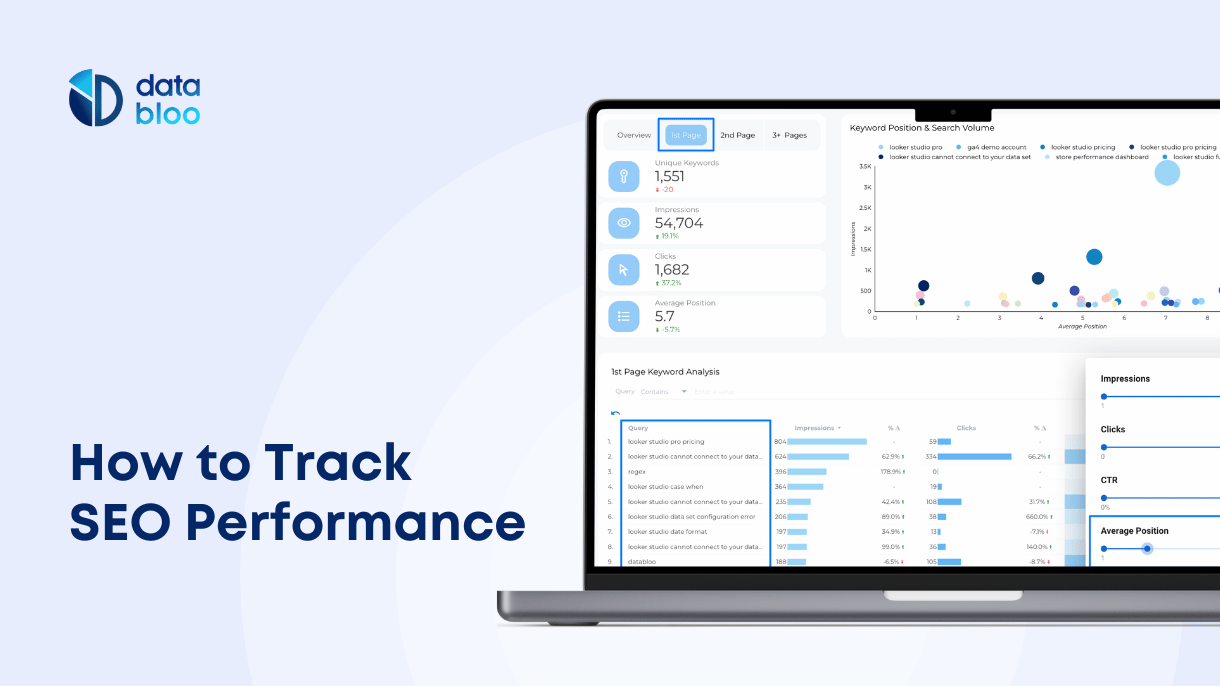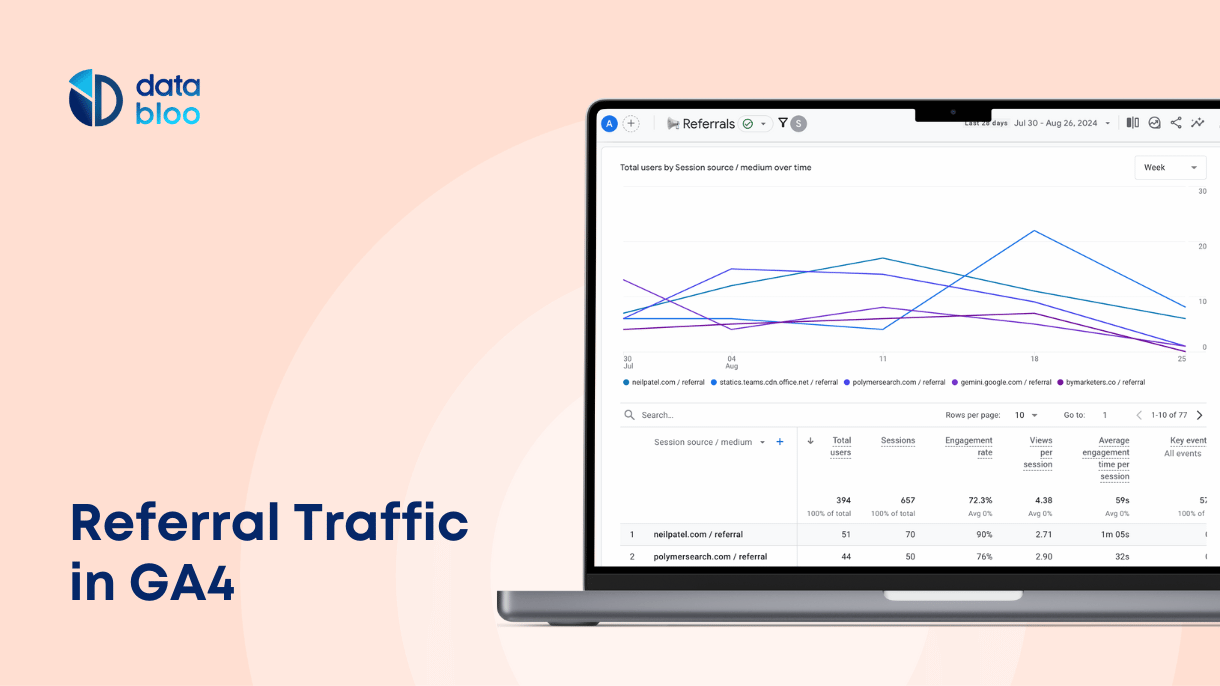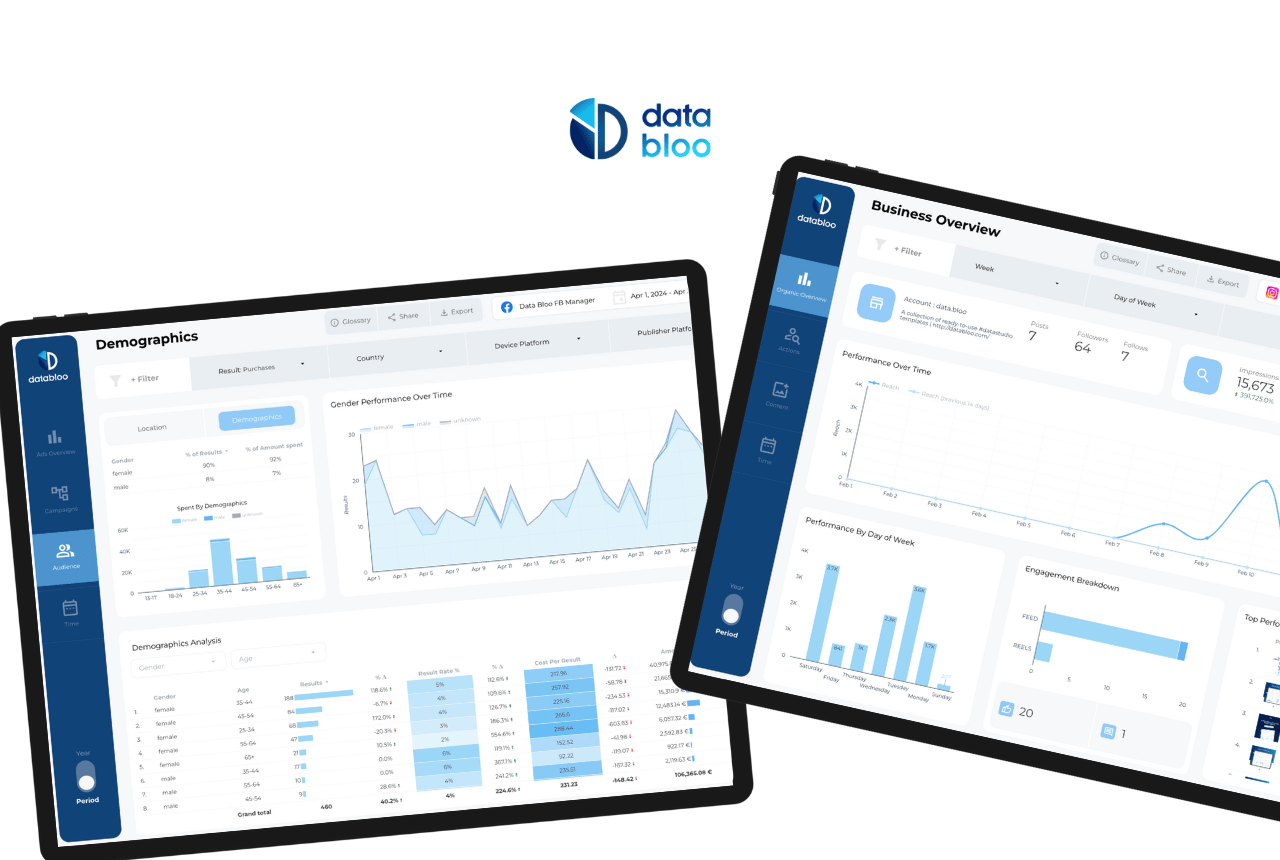Skip ahead >>
Ever wondered why your SEO reports aren’t getting the attention they deserve?
Or why do your clients’ eyes glaze over when you present your hard-earned data?
Whether you’re reporting to impatient clients or demanding executives, we’ve got you covered.
Below are 7 SEO reporting scenarios with example reports and actionable advice for each specific case.
1. Client SEO Reporting
Frequency of reporting: monthly
Main metrics to focus on: organic traffic, keyword rankings, conversions from SEO
Example of report:
Client SEO reporting should focus on demonstrating the value of SEO efforts and their impact on the client’s business goals. Emphasize key performance indicators (KPIs) that align with the client’s objectives, such as increased organic traffic, improved keyword rankings, and conversions from organic search. Present data in a clear, visually appealing format that highlights progress and areas for improvement.
Incorporate competitor analysis into your client reports to provide context for your SEO performance. This allows clients to understand their position in the market and helps justify ongoing SEO investments.
Pro tip: Customize reports for different stakeholders within the client’s organization, tailoring the level of detail and metrics to each audience’s needs and interests.
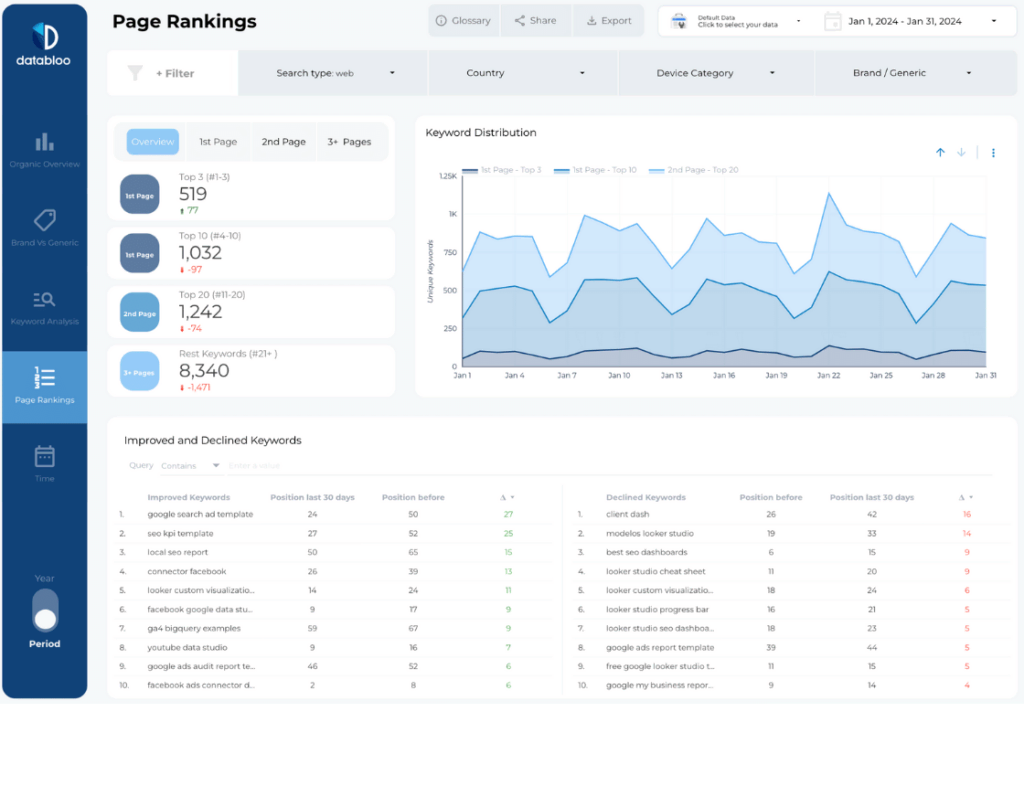
2. In-house SEO Reporting
Frequency of reporting: weekly
Main metrics to focus on: organic conversions, revenue
Example of report:
In-house SEO reporting should focus on aligning SEO performance with overall business objectives and demonstrating the ROI of SEO efforts. Emphasize metrics that directly impact the company’s bottom line, such as organic conversions, revenue generated from organic traffic, and the contribution of SEO to overall marketing goals. Be prepared to dive deep into data and provide actionable insights for different departments.
Recommended read: Best SEO Dashboards For Agencies In 2024 (Free & Paid)
Integrate SEO data with other marketing channel data to show the interplay between SEO and other digital marketing efforts. This holistic approach can reveal valuable cross-channel insights and opportunities for synergy.
Pro tip: Develop automated dashboards for real-time SEO performance tracking, allowing stakeholders to access up-to-date information between formal reports.
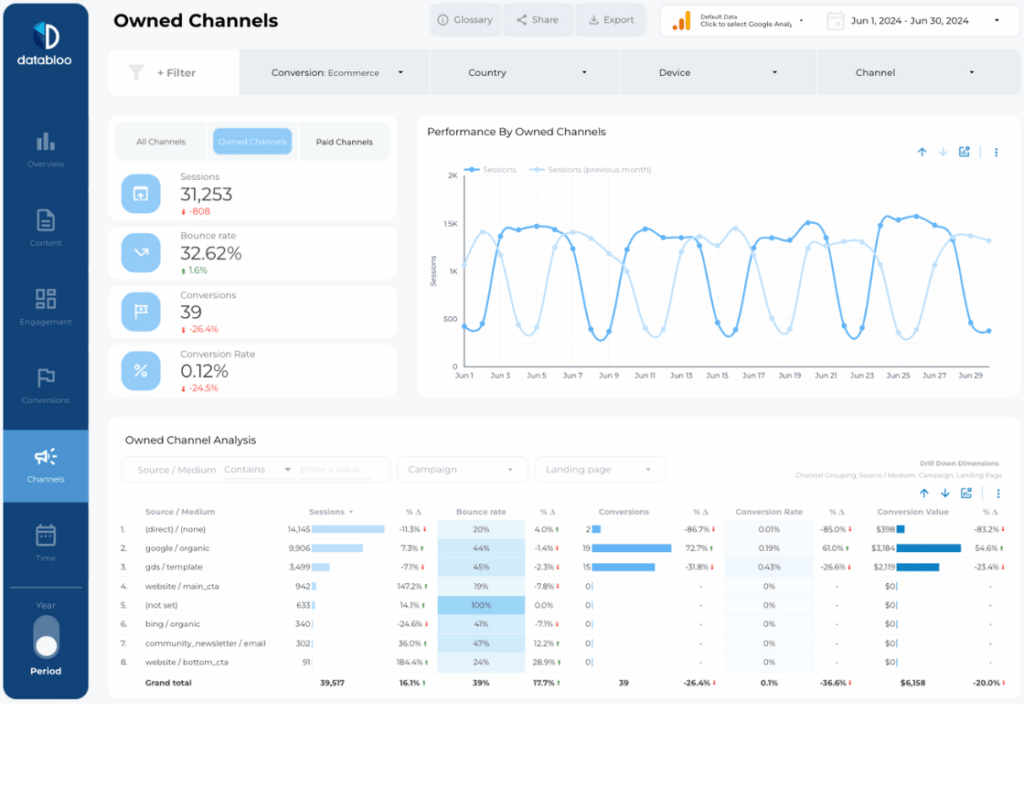
3. Ecommerce SEO Reporting
Frequency of reporting: bi-weekly
Main metrics to focus on: product visibility, revenue attribution, funnel analysis
Example of report:(free demo): ecommerce SEO report template
E-commerce SEO reporting should focus on how organic search performance directly impacts ecommerce KPIs such as online sales and revenue. Emphasize metrics that showcase product visibility in search results, organic traffic to product pages, and the revenue generated from organic search. Pay special attention to tracking the performance of different product categories and seasonal trends that affect e-commerce sales.
Analyze the correlation between organic search rankings and conversion rates for specific products or categories. This can help prioritize SEO efforts on high-value, high-converting products and identify opportunities to optimize underperforming pages.
Pro tip: Implement and report on structured data performance to highlight how rich snippets and enhanced search features are impacting click-through rates and product visibility.
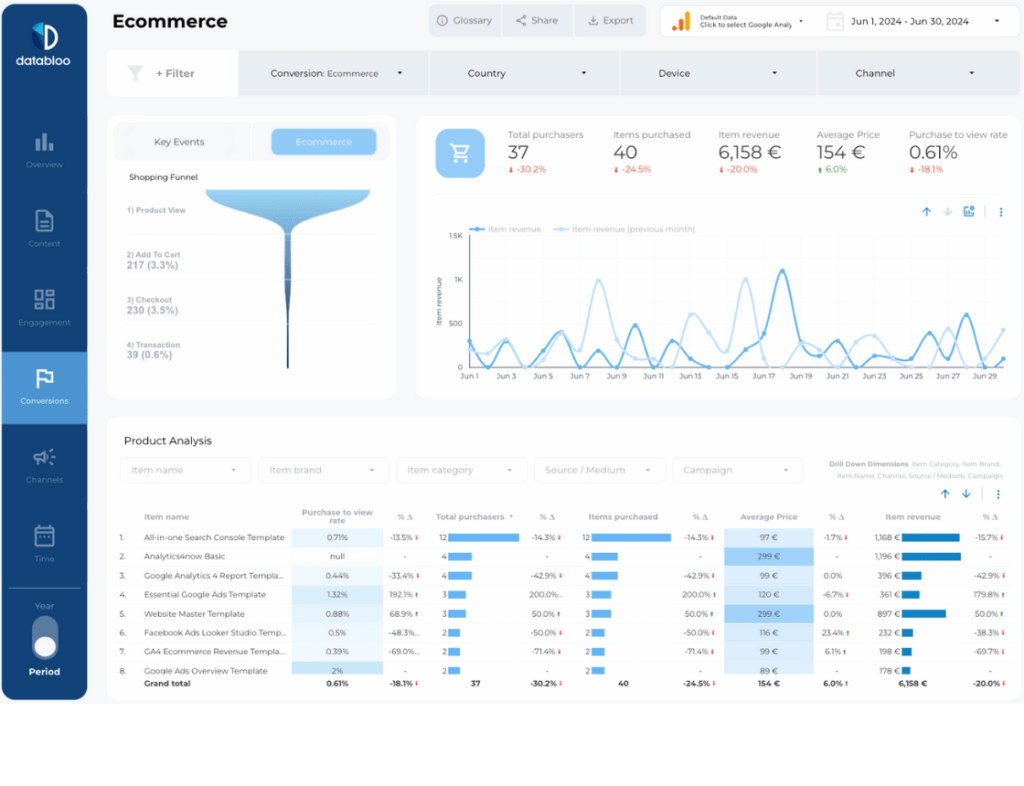
4. Local SEO Reporting
Frequency of reporting: monthly
Main metrics to focus on: local pack rankings, GMB insights
Example of report: local SEO report
Local SEO reporting should focus on visibility and engagement in local search results, emphasizing performance in Google’s local pack, Maps, and Google My Business (GMB) listings. Highlight metrics such as local pack rankings, GMB profile views, clicks for directions, and phone calls from local search results. Also, track reviews and ratings as they significantly impact local search performance.
Analyze the correlation between local search visibility and in-store foot traffic or local conversions. This can help demonstrate the direct impact of local SEO efforts on physical business locations and justify investment in local optimization strategies.
Pro tip: Include competitor benchmarking for local visibility to show how your business stacks up against nearby competitors in local search results and GMB performance.
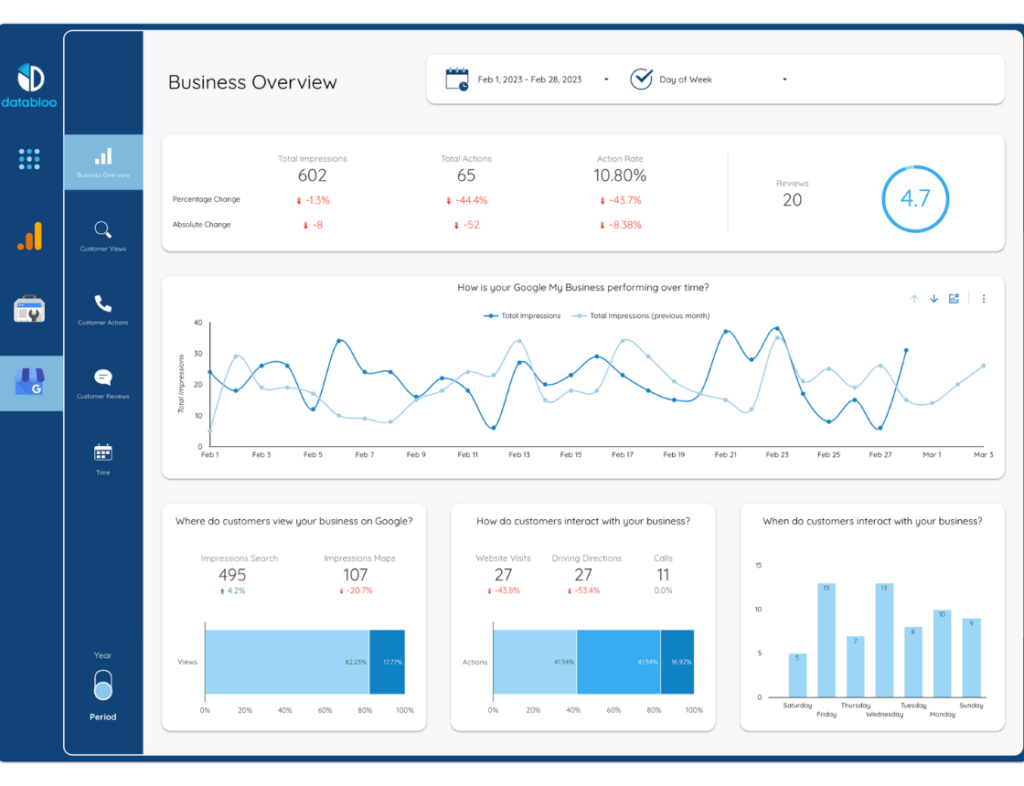
5. Technical SEO Audit Reporting
Frequency of reporting: quarterly
Main metrics to focus on: crawlability, site speed
Example of report:
Technical SEO audit reporting should focus on the website’s overall health from a search engine perspective, highlighting issues that may be impacting crawling, indexing, and ranking. Emphasize metrics related to site structure, page load speed, mobile-friendliness, and crawl efficiency. Present findings on technical issues such as broken links, duplicate content, and improper use of canonical tags.
Correlate technical improvements with changes in organic search performance. This can help demonstrate the impact of addressing technical issues on overall SEO success and justify the resources required for ongoing technical optimization.
Pro tip: Use visual aids like charts or heatmaps to illustrate complex technical concepts, making it easier for non-technical stakeholders to understand the importance of addressing technical SEO issues.
6. Competitor Analysis SEO Reporting
Frequency of reporting: quarterly or monthly
Main metrics to focus on: keyword gaps, backlink profile
Competitor Analysis SEO reporting should focus on benchmarking your website’s performance against key competitors in organic search. Emphasize metrics that highlight competitive advantages and areas for improvement, such as keyword rankings, domain authority, and backlink profiles. Identify opportunities where competitors are outperforming you and areas where you have a competitive edge.
Analyze competitors’ content strategies to identify successful content types, formats, and topics that are driving their organic search performance. This can inform your own content strategy and help you identify gaps in your current approach.
Pro tip: Use share of voice metrics to show how your brand’s visibility in organic search compares to competitors across your most important keyword sets, providing a clear picture of your market position.
7. Content SEO Reporting
Frequency of reporting: monthly
Main metrics to focus on: organic traffic, engagement metrics
Content SEO reporting should focus on the performance of your content in search results and its ability to attract and engage organic visitors. Emphasize metrics such as organic traffic to specific content pieces, time on page, bounce rate, and social shares. Track keyword rankings for target phrases related to your content strategy and monitor the growth of long-tail keyword visibility.
Analyze the correlation between content types (e.g., blog posts, infographics, videos) and their SEO performance. This can help refine your content strategy by identifying which formats are most effective at driving organic traffic and engagement for different topics or audience segments.
Pro tip: Implement and report on internal linking strategies to show how strategic content connections are improving site structure and boosting the visibility of key pages in search results.
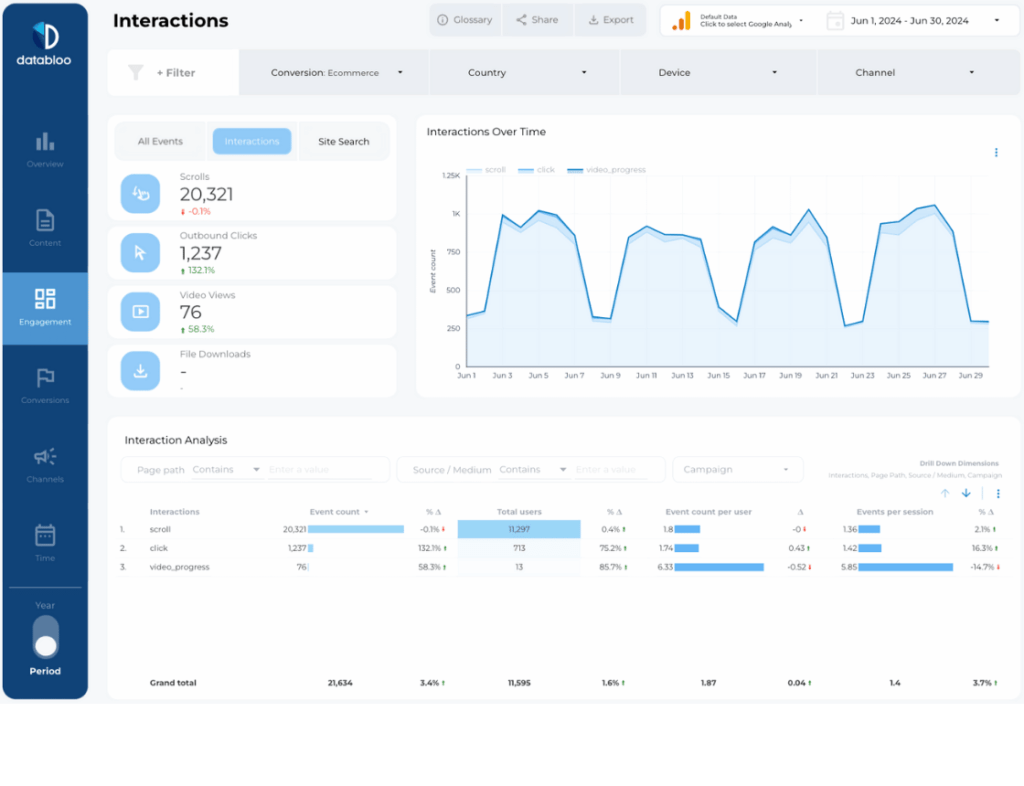
Glossary of SEO Reporting Metrics Mentioned In the Article
- Organic Traffic. The number of visitors coming to your site from organic search results. Variations include traffic by device (desktop, mobile, tablet), by country, by landing page, and by search engine.
- Keyword Rankings. The position of your website in search engine results pages (SERPs) for specific keywords. Track rankings over time, by device, and by location for a comprehensive view.
- Conversions. Actions taken by visitors that align with your business goals, such as purchases, sign-ups, or form submissions. Monitor organic conversion rate and compare it to other channels.
- Revenue Attribution. The amount of revenue generated from organic search traffic. Break this down by product categories, landing pages, or keyword groups to identify top performers.
- Local Pack Rankings. Your position in Google’s local pack results for relevant local searches. Track visibility for different locations and business categories.
- Google My Business (GMB) Insights. Metrics specific to your GMB listing, including profile views, clicks for directions, and phone calls. Monitor these by location for multi-location businesses.
- Crawlability. How easily search engines can access and index your site’s content. Track crawl stats, crawl errors, and indexed pages over time.
- Site Speed. Page load times across your site. Monitor core web vitals, time to first byte (TTFB), and other speed metrics for both mobile and desktop.
- Backlink Profile. The quantity and quality of external links pointing to your site. Track total backlinks, referring domains, and domain authority over time.
- Engagement Metrics. Indicators of how users interact with your content, including time on page, bounce rate, and pages per session. Segment these by traffic source and content type.
- Share of Voice. Your brand’s visibility in organic search compared to competitors for a given set of keywords. Calculate this based on ranking positions and search volume.
- Lead Quality. The value of leads generated through organic search. Measure this through lead scoring, conversion rates to customers, or average deal size.
- Product Visibility. How often your products appear in relevant search results. Track impressions and click-through rates for product listings in both regular and shopping search results.
- Content Performance. The SEO success of specific content pieces. Monitor organic traffic, backlinks acquired, and rankings for target keywords for each piece of content.
- Mobile Performance. Metrics specific to mobile search performance. Include mobile rankings, mobile-specific conversions, and mobile usability issues.
- E-A-T Signals. Indicators of Expertise, Authoritativeness, and Trustworthiness. While not directly measurable, track factors like author page rankings, brand mentions, and reviews.

